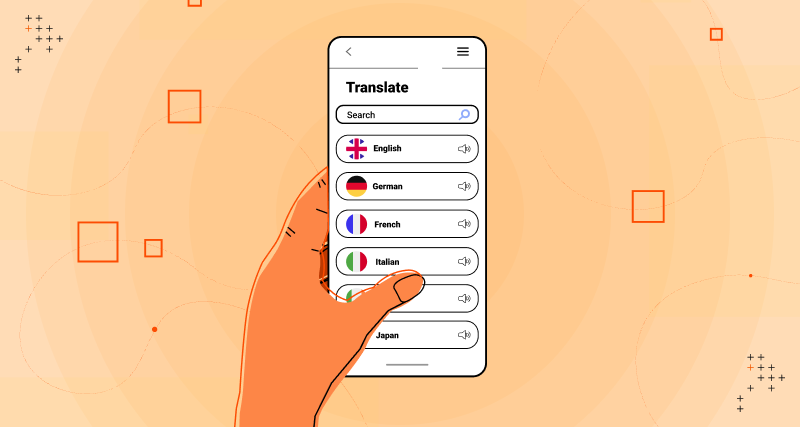Introduction
As Learning and Development (L&D), as an industry, looks to serve global enterprises, the stakes have changed. L&D has become core to workforce transformation and business agility, meaning their digital infrastructure must evolve beyond traditional CMS limitations.
The demand is no longer just about delivering content, it's about helping enterprises scale effective, measurable, and engaging digital experiences across languages, cultures, and devices.

According to the 2024 LinkedIn Workplace Learning Report, 93% of L&D professionals are concerned about scaling learning programs globally without sacrificing personalization and relevance.
For solution providers, this signals a strategic opportunity to embed modular, multilingual Digital Experience Platforms (DXPs) into their enterprise digital offerings.
This blog explores how a modern DXP approach enables providers to help clients reduce time-to-market, boost user engagement, and drive measurable business outcomes—at scale.
Evolving Enterprise Expectations of Digital Learning Infrastructure
Global organizations are demanding scalable, context-aware, and personalized digital environments that integrate across HR, compliance, and performance ecosystems.
Traditional CMS tools fall short when:
- Content lacks relevance across diverse user roles: One-size-fits-all content undermines engagement and fails to deliver role-specific insights.
- Localization is slow or inconsistent: Manual workflows result in inefficiencies and delays in content deployment.
- Publishing requires constant developer intervention: Marketers and educators are hampered by a lack of autonomy in managing experiences.
Digital platforms must adapt by offering:
- Modular content architecture that supports rapid updates and reuse: Enables fast adaptation to new geographies or job functions.
- Mobile-first UX to accommodate all learners across devices: Ensures equitable access across mobile, desktop, and tablet formats.
- Experience-driven journeys informed by behavioral insights allow content to be dynamically adapted to user behavior, improving engagement.
By aligning with these expectations, these digital platforms can act as strategic enablers of business transformation, not just content containers.
Driving Business Alignment Through Personalization
Enterprise buyers now expect digital platforms to demonstrate business ROI, not just user engagement. Personalization is critical to this alignment.
Digital platforms must:
- Deliver relevant experiences based on role, geography, and business function
- Tie digital experience engagement to performance goals, compliance, and upskilling needs
- Adapt dynamically using real-time behavioral data
Example Stack and How It Drives KPIs
|
Tool |
Function |
Business Outcome |
|
Salesforce CDP |
User segmentation and persona-driven recommendations |
Enables targeted interventions across global teams |
|
GA4 |
Behavior tracking and dropout analysis |
Optimizes content sequencing and conversion |
|
VWO |
A/B testing for content, formats, and calls-to-action |
Improves engagement and informs UX iterations |
|
6sense |
Intent prediction and re- engagement triggers |
Reduces attrition and increases content consumption across cohorts |
These tools allow providers to offer platforms that directly link user behavior to business metrics like productivity, compliance adherence, and operational agility.
Overcoming the Bottlenecks of Legacy CMS Architectures
Many enterprises still rely on legacy CMS systems that create friction in content delivery:
- Manual translation workflows cause delays and inconsistencies: These slow down market readiness and cause inaccuracies across regions.
- Centralized content models limit regional flexibility: Teams cannot easily localize or experiment with content.
- Data silos block unified measurement and personalization: Fragmented insights reduce effectiveness.
To differentiate in the enterprise market, providers should embrace modular DXP architectures featuring:
- Component-based content models for faster localization: Improves reusability and maintains consistency across regions.
- Integrated translation workflows with tools like Phrase and Smartling: Automates localization and improves governance.
- Headless content delivery for decoupling experience layers from backend systems: Allows independent innovation at the frontend.
With these capabilities, platforms enable enterprise teams to adapt quickly to market or organizational shifts.
Building for Scale: A DXP Blueprint for Global Learning Solutions
A modern DXP must be designed to interoperate across enterprise systems while empowering non-technical users.

Key Platform Layers
1. Experience Management Layer
- Tools: Drupal CMS, Acquia Site Studio
- Value to Client: Rapid campaign creation without developer bottlenecks
- Case: A global humanitarian organization enabled multilingual rollout across 15+ markets via modular setup
2. Translation & Localization Layer
- Tools: Acquia + Phrase, Smartling
- Value: Glossary-controlled, automated localization with real-time updates
- Case: A leading global university achieved scalable RTL support and accessibility compliance across geographies
3. Personalization Layer
- Tools: Salesforce CDP, GA4, VWO, 6sense
- Value: Behavioral data powers targeted content aligned with organizational priorities
4. Analytics Layer
- Tools: Tableau, GA4, Acquia Campaign Studio
- Value: Unified visibility for HR, L&D, and business units into impact metrics and KPIs
5. Systems Integration Layer
- Tools: Workday, Cornerstone, SuccessFactors
- Value: Synchronizes engagement and performance data for talent planning
Each layer contributes to delivering scalable, measurable, and compliant digital infrastructures for global clients.
Conclusion: Enabling Enterprise-Wide Learning Transformation
L&D solution providers are no longer simply offering e-learning systems—they are shaping comprehensive digital experiences that support enterprise-wide transformation. The mandate is clear: empower clients with platforms that are multilingual, outcome-focused, and deeply integrated with the business.
Modern DXPs offer this competitive edge by:
- Enabling content reuse and localization without sacrificing speed
- Supporting behavioral targeting and hyper-personalization
- Delivering actionable insights that tie experiences to measurable business outcomes
By embracing these capabilities, providers become trusted partners in enterprise transformation, offering digital solutions that scale performance, accelerate global reach, and create enduring value.

Hetal Mistry, Director Of Global Delivery
Passionate about storytelling and history, I love reading and exploring music. Family time is essential, and I enjoy decluttering. Protecting my sleep and meals keeps me happy!

 We respect your privacy. Your information is safe.
We respect your privacy. Your information is safe.



Leave us a comment